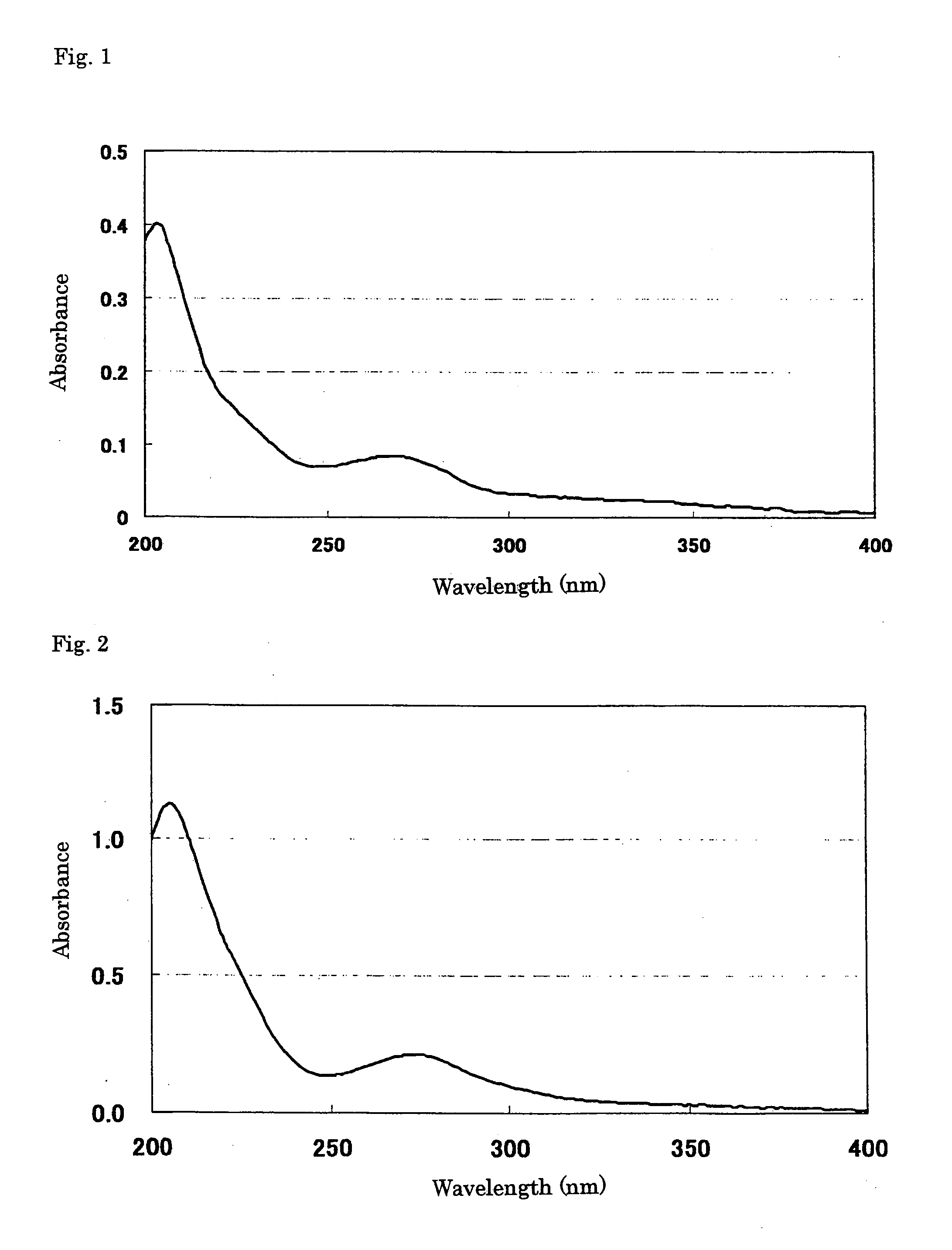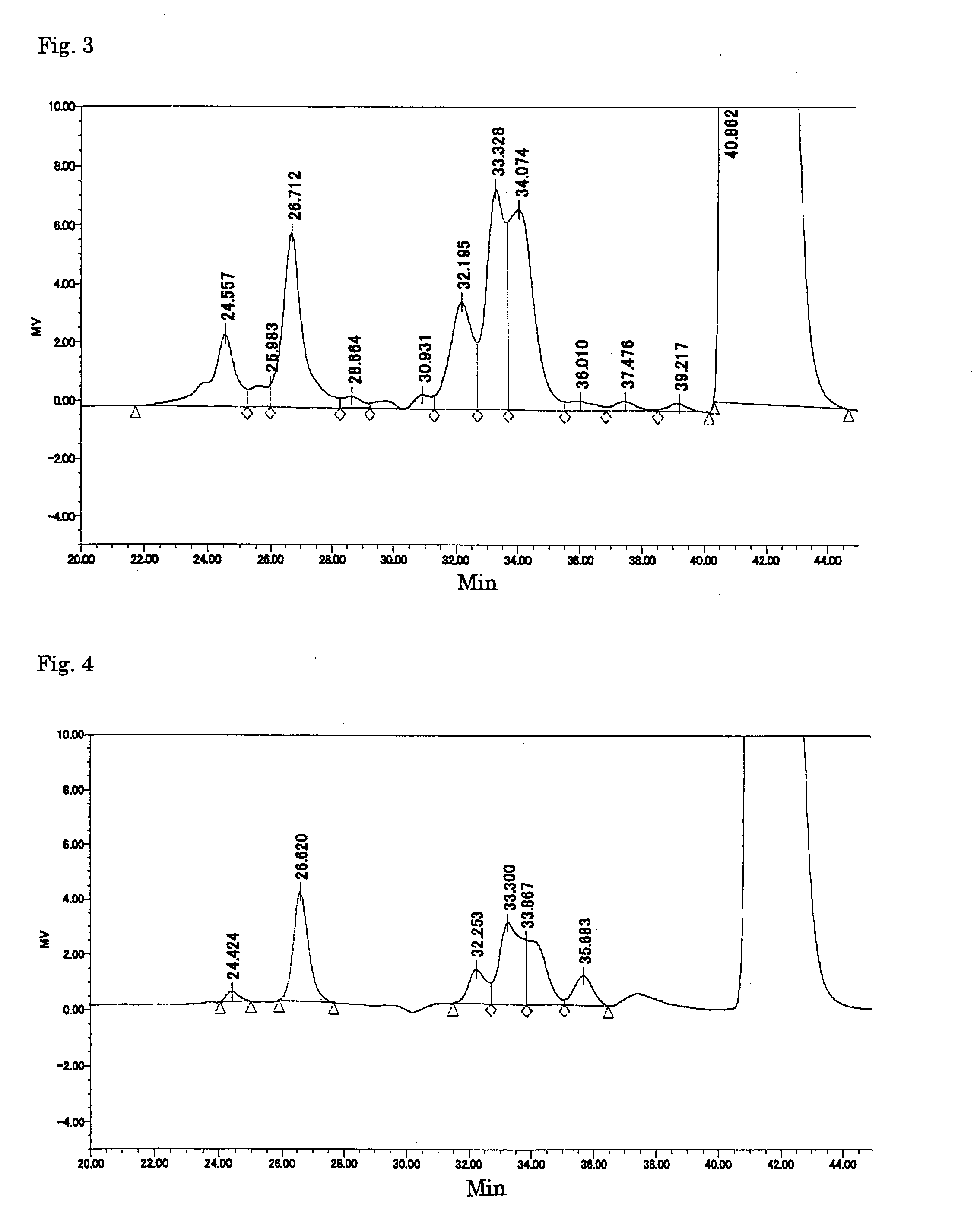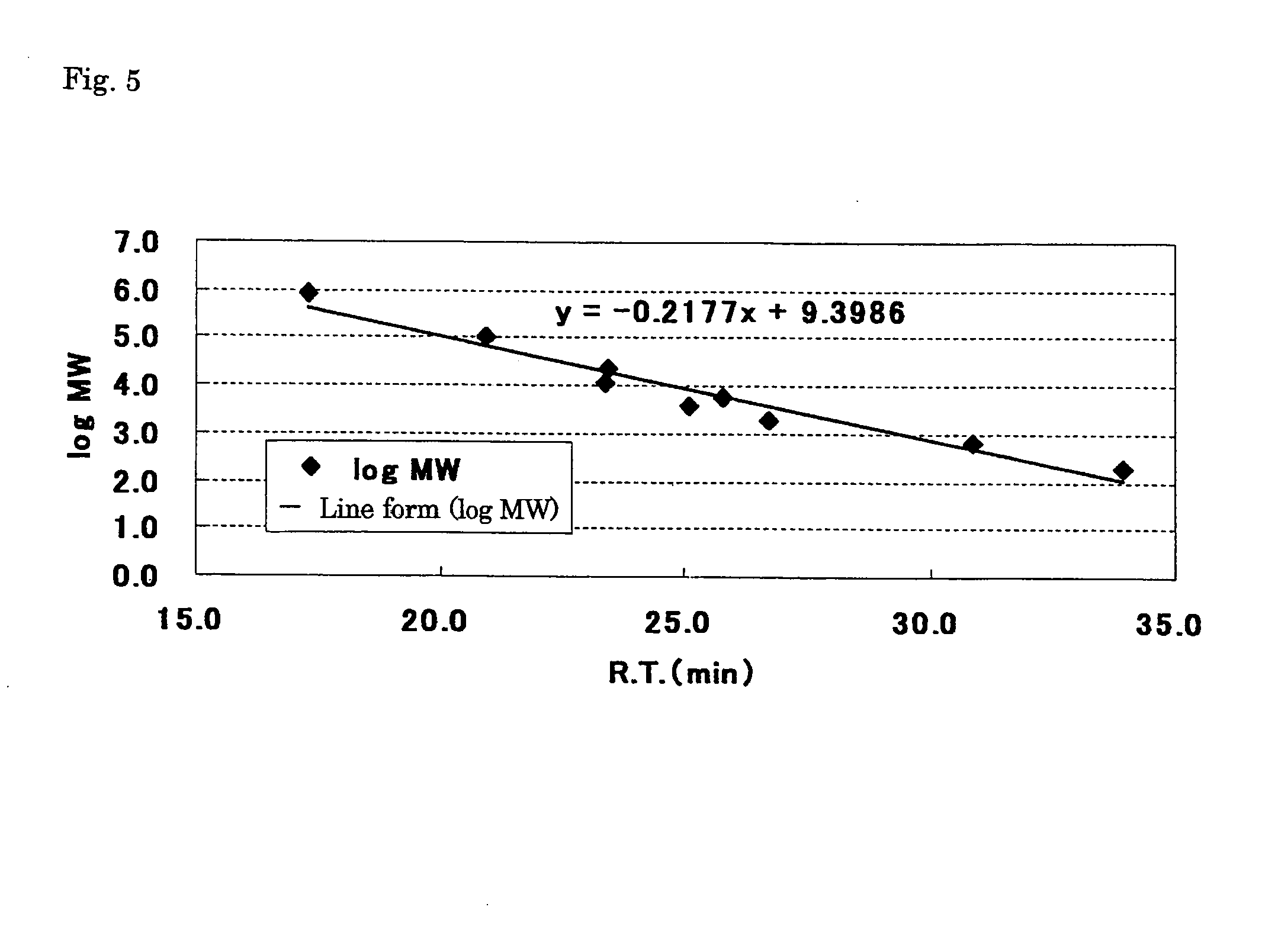Degradation inhibitor for flavor or aroma
a technology of flavor or aroma and degradation inhibitor, which is applied in the direction of antioxidants, plant/algae/fungi/lichens, enzymology, etc., to achieve the effect of preventing deterioration of flavor and fragrance, maintaining fresh citrus flavor and fragrance, and minimal effect on the taste of the final produ
- Summary
- Abstract
- Description
- Claims
- Application Information
AI Technical Summary
Benefits of technology
Problems solved by technology
Method used
Image
Examples
example 1
[0197]To 10 g of vanilla beans there were added 35 g of ethanol and 65 g of distilled water, and the mixture was allowed to stand at room temperature in a dark area for 4 weeks for extraction. The solution was filtered to obtain 90 g of vanilla extract. To 90 g of the extract there was then added 10 g of a 1 wt % / 70 wt % aqueous ethanol solution of an oxidizing enzyme-treated tea extract to obtain a vanilla extract according to the invention. The obtained vanilla extract was evaluated by a trained panel, which evaluated it as having no off-taste or off-odor and retaining the original flavor of vanilla.
example 2
Candy
[0198]After combining 141 g of rice jelly, 180 g of granulated sugar and 60 g of water, the mixture was heated to 155° C. After then cooling to 120° C., 6 g of citric acid, 0.6 g of a citrus flavoring agent and 0.1 g of a 1 wt % / 70 wt % aqueous ethanol solution of an oxidizing enzyme-treated tea extract were added, and the mixture was shaped and cooled. The obtained candy was evaluated by a trained panel, which evaluated it as being free of off-taste and off-odor and retaining a satisfactory flavor.
example 3
Margarine
[0199]After combining 55 g of shortening, 15 g of corn oil, 0.1 g of a 30%-carotene solution, 0.2 g of lecithin and 0.3 g of an emulsifier, the mixture was sterilized at 80° C., 10 minutes with a hot water bath. Separately, 27.9 g of water, 0.5 g of table salt, 1 g of skim milk powder and 0.1 g of a 1 wt % / 70 wt % aqueous ethanol solution of the oxidizing enzyme-treated tea extract were mixed and heated to 85° C. in a hot water bath. The corn oil mixture and skim milk powder mixture obtained in this manner were cooled to 50-60° C. and then combined, and a Disper mixer was used for stirring at 1,500 rpm for 5 minutes while cooling with ice water. After thoroughly kneading the entire mixture with a rubber spatula while cooling with water (to 10° C.), it was transferred to a container and aged overnight in a refrigerator to obtain margarine. The obtained margarine was evaluated by a trained panel, which evaluated it as being free of off-taste and off-odor and retaining the ori...
PUM
| Property | Measurement | Unit |
|---|---|---|
| reaction temperature | aaaaa | aaaaa |
| reaction temperature | aaaaa | aaaaa |
| total volume | aaaaa | aaaaa |
Abstract
Description
Claims
Application Information
 Login to View More
Login to View More - R&D
- Intellectual Property
- Life Sciences
- Materials
- Tech Scout
- Unparalleled Data Quality
- Higher Quality Content
- 60% Fewer Hallucinations
Browse by: Latest US Patents, China's latest patents, Technical Efficacy Thesaurus, Application Domain, Technology Topic, Popular Technical Reports.
© 2025 PatSnap. All rights reserved.Legal|Privacy policy|Modern Slavery Act Transparency Statement|Sitemap|About US| Contact US: help@patsnap.com



